Natalie Schluter
Pitch Accent Detection improves Pretrained Automatic Speech Recognition
Aug 06, 2025Abstract:We show the performance of Automatic Speech Recognition (ASR) systems that use semi-supervised speech representations can be boosted by a complimentary pitch accent detection module, by introducing a joint ASR and pitch accent detection model. The pitch accent detection component of our model achieves a significant improvement on the state-of-the-art for the task, closing the gap in F1-score by 41%. Additionally, the ASR performance in joint training decreases WER by 28.3% on LibriSpeech, under limited resource fine-tuning. With these results, we show the importance of extending pretrained speech models to retain or re-learn important prosodic cues such as pitch accent.
Discriminating Form and Meaning in Multilingual Models with Minimal-Pair ABX Tasks
May 23, 2025Abstract:We introduce a set of training-free ABX-style discrimination tasks to evaluate how multilingual language models represent language identity (form) and semantic content (meaning). Inspired from speech processing, these zero-shot tasks measure whether minimal differences in representation can be reliably detected. This offers a flexible and interpretable alternative to probing. Applied to XLM-R (Conneau et al, 2020) across pretraining checkpoints and layers, we find that language discrimination declines over training and becomes concentrated in lower layers, while meaning discrimination strengthens over time and stabilizes in deeper layers. We then explore probing tasks, showing some alignment between our metrics and linguistic learning performance. Our results position ABX tasks as a lightweight framework for analyzing the structure of multilingual representations.
The Role of Prosody in Spoken Question Answering
Feb 08, 2025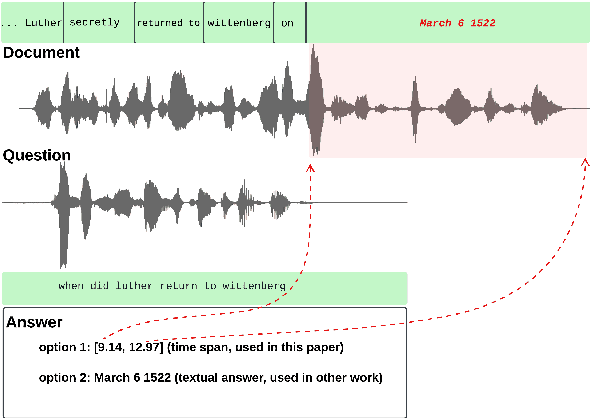
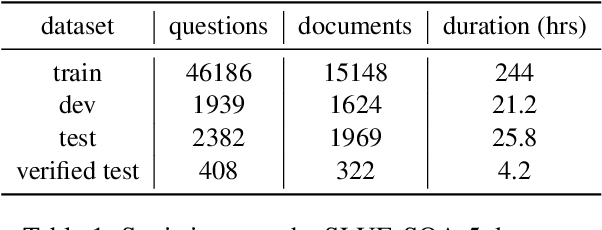
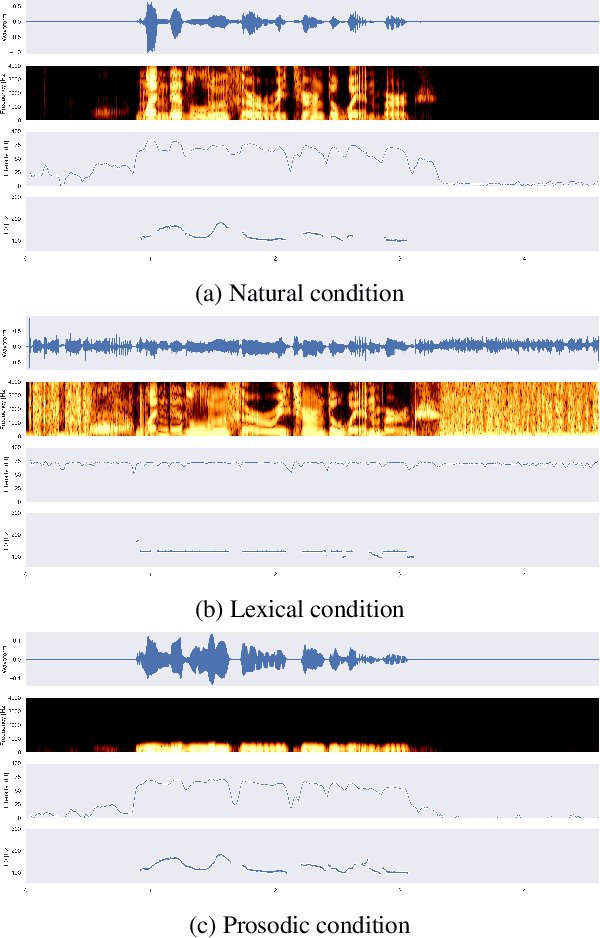
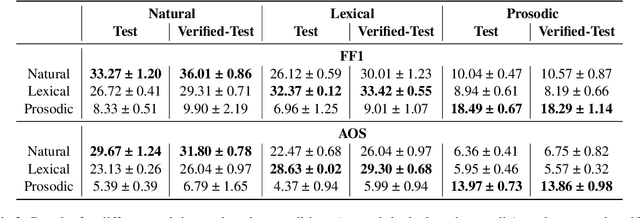
Abstract:Spoken language understanding research to date has generally carried a heavy text perspective. Most datasets are derived from text, which is then subsequently synthesized into speech, and most models typically rely on automatic transcriptions of speech. This is to the detriment of prosody--additional information carried by the speech signal beyond the phonetics of the words themselves and difficult to recover from text alone. In this work, we investigate the role of prosody in Spoken Question Answering. By isolating prosodic and lexical information on the SLUE-SQA-5 dataset, which consists of natural speech, we demonstrate that models trained on prosodic information alone can perform reasonably well by utilizing prosodic cues. However, we find that when lexical information is available, models tend to predominantly rely on it. Our findings suggest that while prosodic cues provide valuable supplementary information, more effective integration methods are required to ensure prosody contributes more significantly alongside lexical features.
Training Bilingual LMs with Data Constraints in the Targeted Language
Nov 20, 2024



Abstract:Large language models are trained on massive scrapes of the web, as required by current scaling laws. Most progress is made for English, given its abundance of high-quality pretraining data. For most other languages, however, such high quality pretraining data is unavailable. In this work, we study how to boost pretrained model performance in a data constrained target language by enlisting data from an auxiliary language for which high quality data is available. We study this by quantifying the performance gap between training with data in a data-rich auxiliary language compared with training in the target language, exploring the benefits of translation systems, studying the limitations of model scaling for data constrained languages, and proposing new methods for upsampling data from the auxiliary language. Our results show that stronger auxiliary datasets result in performance gains without modification to the model or training objective for close languages, and, in particular, that performance gains due to the development of more information-rich English pretraining datasets can extend to targeted language settings with limited data.
GrammaMT: Improving Machine Translation with Grammar-Informed In-Context Learning
Oct 24, 2024Abstract:We introduce GrammaMT, a grammatically-aware prompting approach for machine translation that uses Interlinear Glossed Text (IGT), a common form of linguistic description providing morphological and lexical annotations for source sentences. GrammaMT proposes three prompting strategies: gloss-shot, chain-gloss and model-gloss. All are training-free, requiring only a few examples that involve minimal effort to collect, and making them well-suited for low-resource setups. Experiments show that GrammaMT enhances translation performance on open-source instruction-tuned LLMs for various low- to high-resource languages across three benchmarks: (1) the largest IGT corpus, (2) the challenging 2023 SIGMORPHON Shared Task data over endangered languages, and (3) even in an out-of-domain setting with FLORES. Moreover, ablation studies reveal that leveraging gloss resources could substantially boost MT performance (by over 17 BLEU points) if LLMs accurately generate or access input sentence glosses.
Construction of Paired Knowledge Graph-Text Datasets Informed by Cyclic Evaluation
Sep 20, 2023



Abstract:Datasets that pair Knowledge Graphs (KG) and text together (KG-T) can be used to train forward and reverse neural models that generate text from KG and vice versa. However models trained on datasets where KG and text pairs are not equivalent can suffer from more hallucination and poorer recall. In this paper, we verify this empirically by generating datasets with different levels of noise and find that noisier datasets do indeed lead to more hallucination. We argue that the ability of forward and reverse models trained on a dataset to cyclically regenerate source KG or text is a proxy for the equivalence between the KG and the text in the dataset. Using cyclic evaluation we find that manually created WebNLG is much better than automatically created TeKGen and T-REx. Guided by these observations, we construct a new, improved dataset called LAGRANGE using heuristics meant to improve equivalence between KG and text and show the impact of each of the heuristics on cyclic evaluation. We also construct two synthetic datasets using large language models (LLMs), and observe that these are conducive to models that perform significantly well on cyclic generation of text, but less so on cyclic generation of KGs, probably because of a lack of a consistent underlying ontology.
High-Resource Methodological Bias in Low-Resource Investigations
Nov 14, 2022Abstract:The central bottleneck for low-resource NLP is typically regarded to be the quantity of accessible data, overlooking the contribution of data quality. This is particularly seen in the development and evaluation of low-resource systems via down sampling of high-resource language data. In this work we investigate the validity of this approach, and we specifically focus on two well-known NLP tasks for our empirical investigations: POS-tagging and machine translation. We show that down sampling from a high-resource language results in datasets with different properties than the low-resource datasets, impacting the model performance for both POS-tagging and machine translation. Based on these results we conclude that naive down sampling of datasets results in a biased view of how well these systems work in a low-resource scenario.
On approximating dropout noise injection
Jun 02, 2019Abstract:This paper examines the assumptions of the derived equivalence between dropout noise injection and $L_2$ regularisation for logistic regression with negative log loss. We show that the approximation method is based on a divergent Taylor expansion, making, subsequent work using this approximation to compare the dropout trained logistic regression model with standard regularisers unfortunately ill-founded to date. Moreover, the approximation approach is shown to be invalid using any robust constraints. We show how this finding extends to general neural network topologies that use a cross-entropy prediction layer.
UniParse: A universal graph-based parsing toolkit
Jul 11, 2018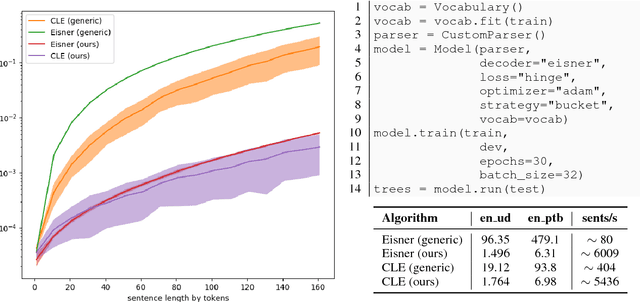
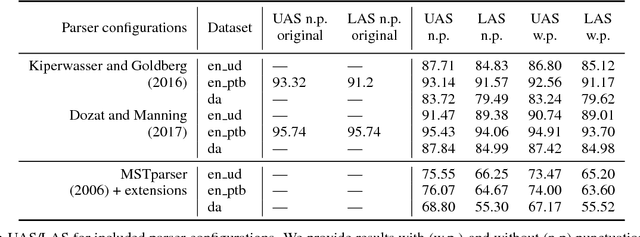
Abstract:This paper describes the design and use of the graph-based parsing framework and toolkit UniParse, released as an open-source python software package. UniParse as a framework novelly streamlines research prototyping, development and evaluation of graph-based dependency parsing architectures. UniParse does this by enabling highly efficient, sufficiently independent, easily readable, and easily extensible implementations for all dependency parser components. We distribute the toolkit with ready-made configurations as re-implementations of all current state-of-the-art first-order graph-based parsers, including even more efficient Cython implementations of both encoders and decoders, as well as the required specialised loss functions.
Baselines and test data for cross-lingual inference
Mar 02, 2018

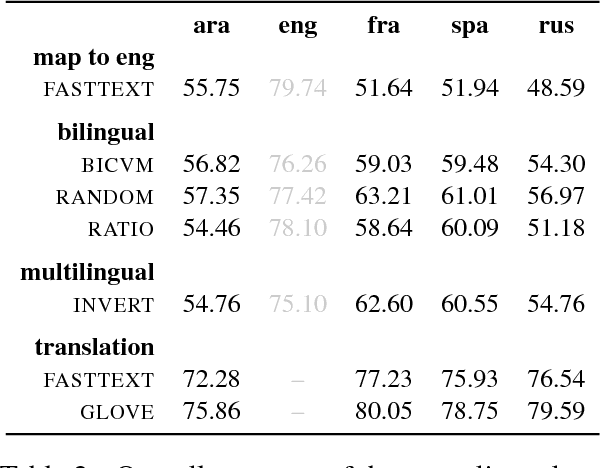
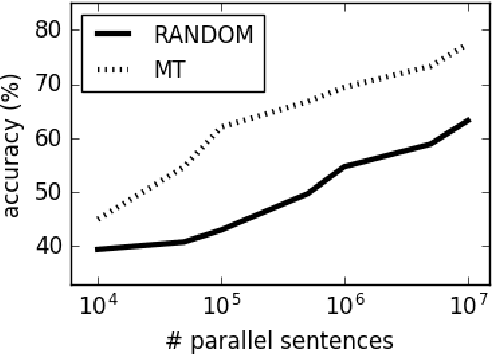
Abstract:The recent years have seen a revival of interest in textual entailment, sparked by i) the emergence of powerful deep neural network learners for natural language processing and ii) the timely development of large-scale evaluation datasets such as SNLI. Recast as natural language inference, the problem now amounts to detecting the relation between pairs of statements: they either contradict or entail one another, or they are mutually neutral. Current research in natural language inference is effectively exclusive to English. In this paper, we propose to advance the research in SNLI-style natural language inference toward multilingual evaluation. To that end, we provide test data for four major languages: Arabic, French, Spanish, and Russian. We experiment with a set of baselines. Our systems are based on cross-lingual word embeddings and machine translation. While our best system scores an average accuracy of just over 75%, we focus largely on enabling further research in multilingual inference.
 Add to Chrome
Add to Chrome Add to Firefox
Add to Firefox Add to Edge
Add to Edge